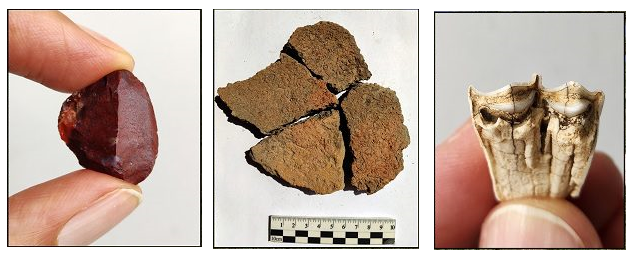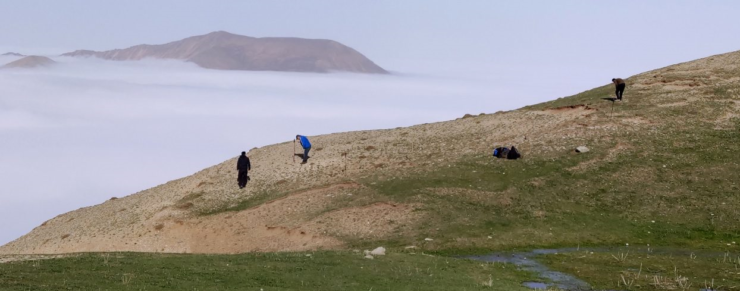The Herders’ Camp was discovered during a survey project in Masouleh’s mountain ranges. The area is one of the highest peaks of the Talesh Mountains, 2,400 meters above sea level, with traces of a late Neolithic settlement. The Talesh region is located in the north of Iran and on the coast of the Caspian Sea, in a mountainous natural wonder.
According to Heritage Daily‘s report, the team recovered ceramic shards, animal bones, and stone tools at the site, which is the oldest seasonal habitation of prehistoric herders in the southern Caspian Sea.
The Herders’ Camp discovery demonstrates that late Neolithic herders grazed their herds in the pastures of these mountain peaks, providing new insights into pastoral behaviors following the transition from hunting-gathering to herding.



Pastoralism is a form of animal husbandry where domesticated animals are released onto large vegetated outdoor lands (pastures) for grazing, historically by nomadic people who moved around with their herds. True nomads follow an irregular pattern of movement, in contrast with transhumance, where seasonal pastures are fixed. The animal species involved include cattle, camels, goats, yaks, llamas, reindeer, horses and sheep.
To add more, Pastoralism still remains a way of life in many geographies, including Africa, the Tibetan plateau, the Eurasian steppes, the Andes, Patagonia, the Pampas, Australia, and more. As of 2019, 200-500 million people worldwide practice pastoralism.
As a result, since September 2021, a team of archaeologists led by Fereidoun Biglari has discovered 39 archaeological sites in Masouleh’s Core Zone that date back to various prehistoric, ancient, and Islamic times. Fereidoun Biglari is co-founder and head of the Paleolithic department in National Museum of Iran which established. The historical city of Masouleh is inscribed on the World Heritage List.
